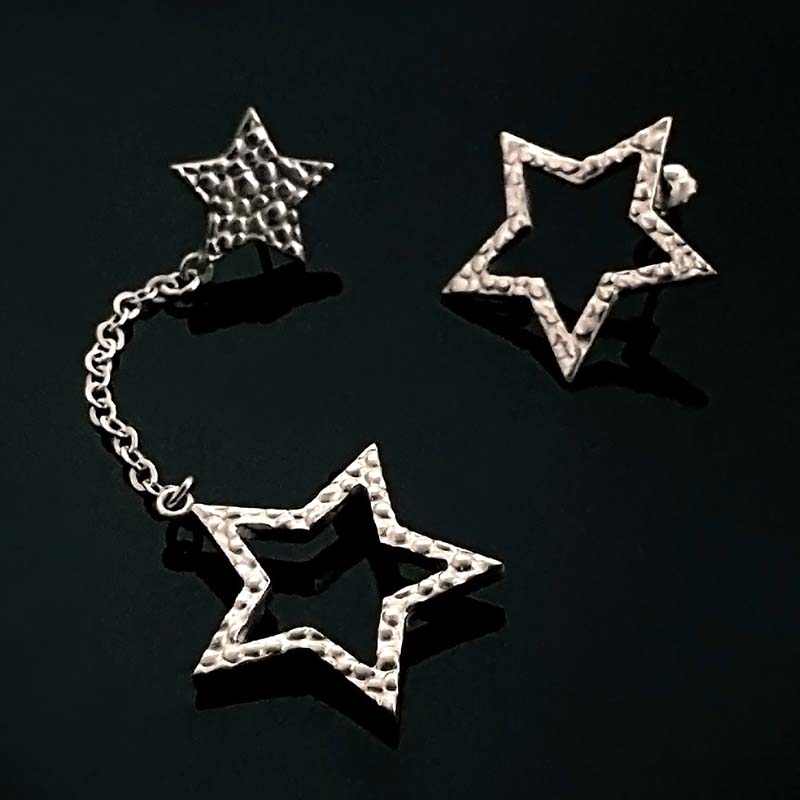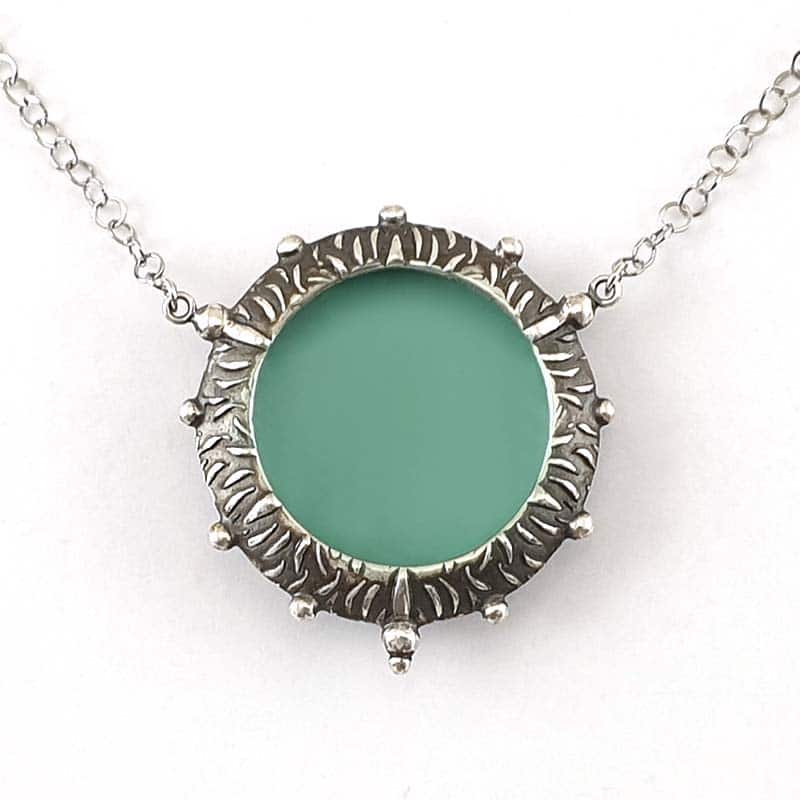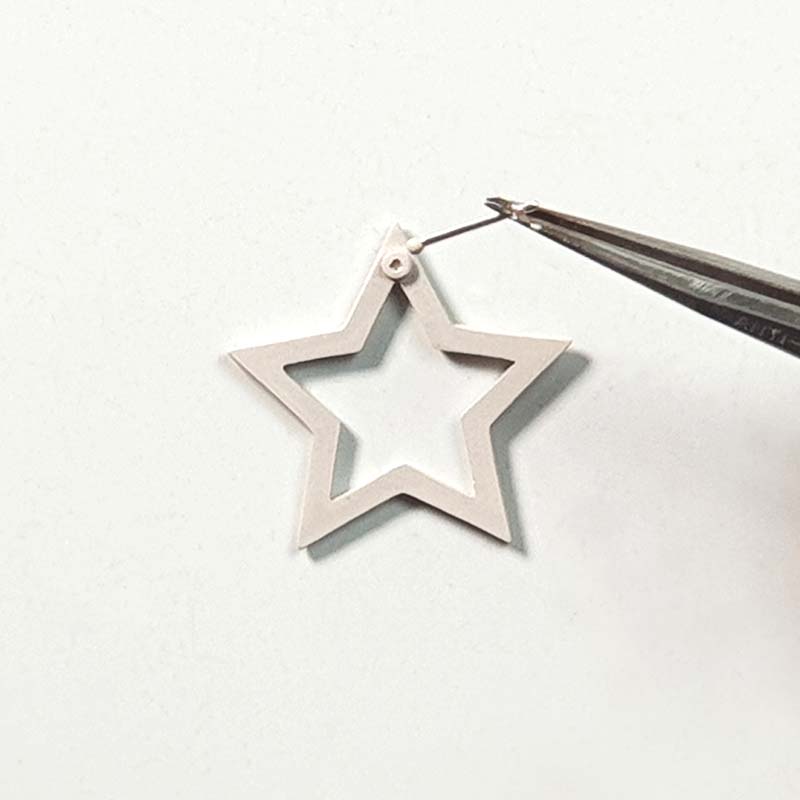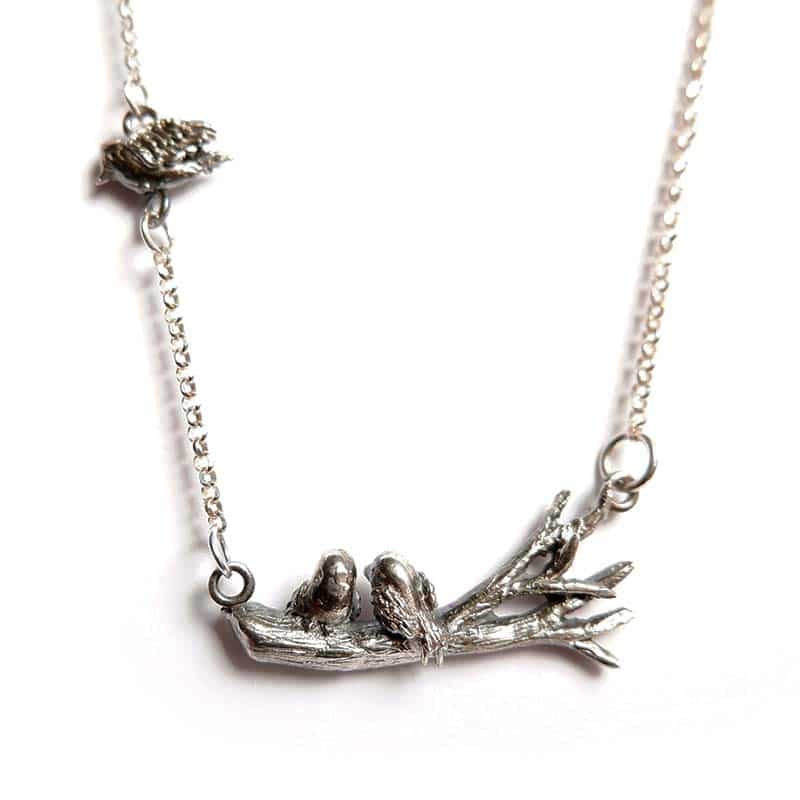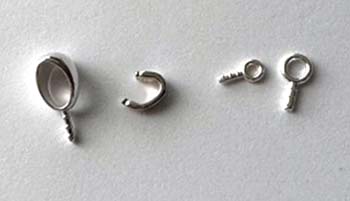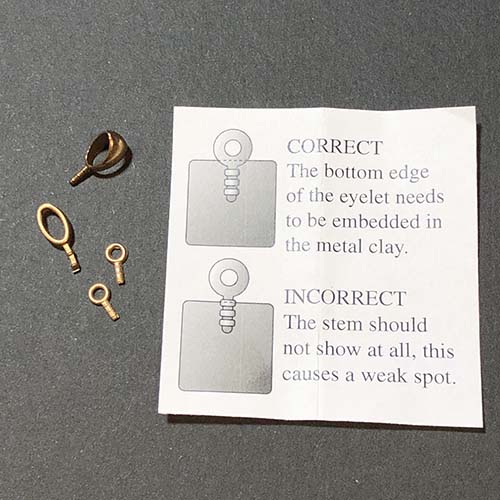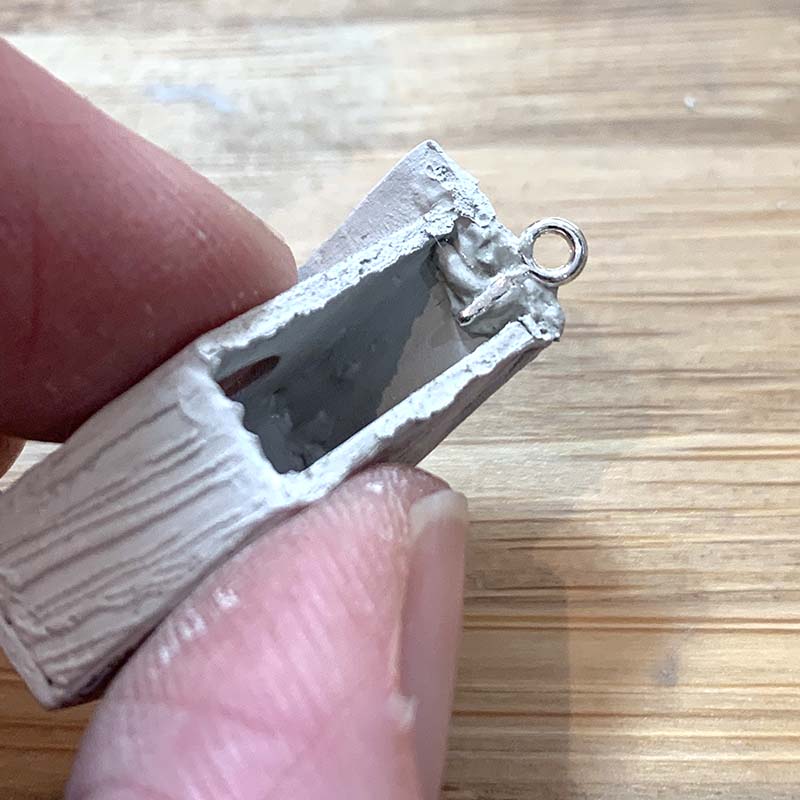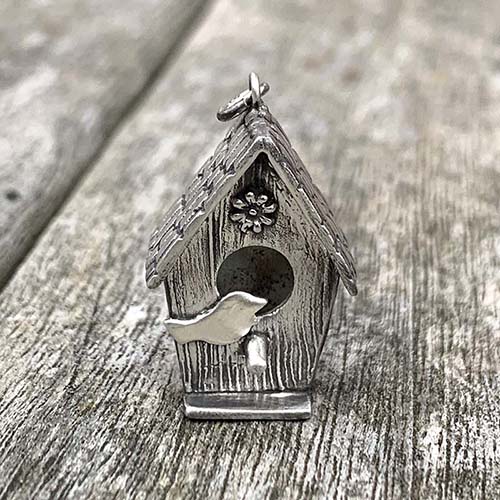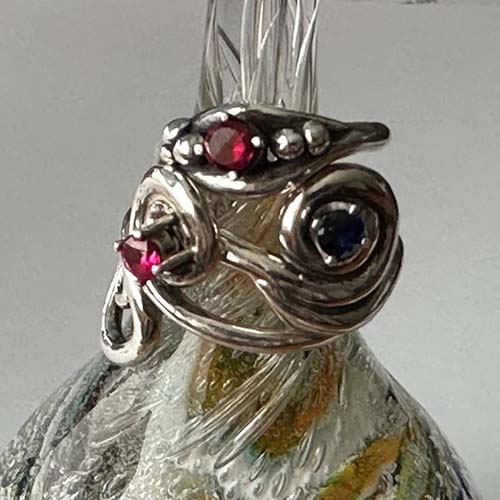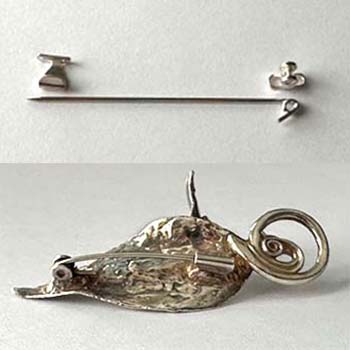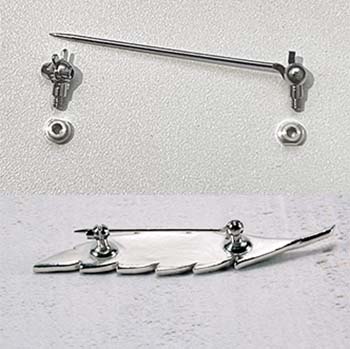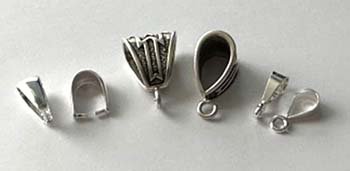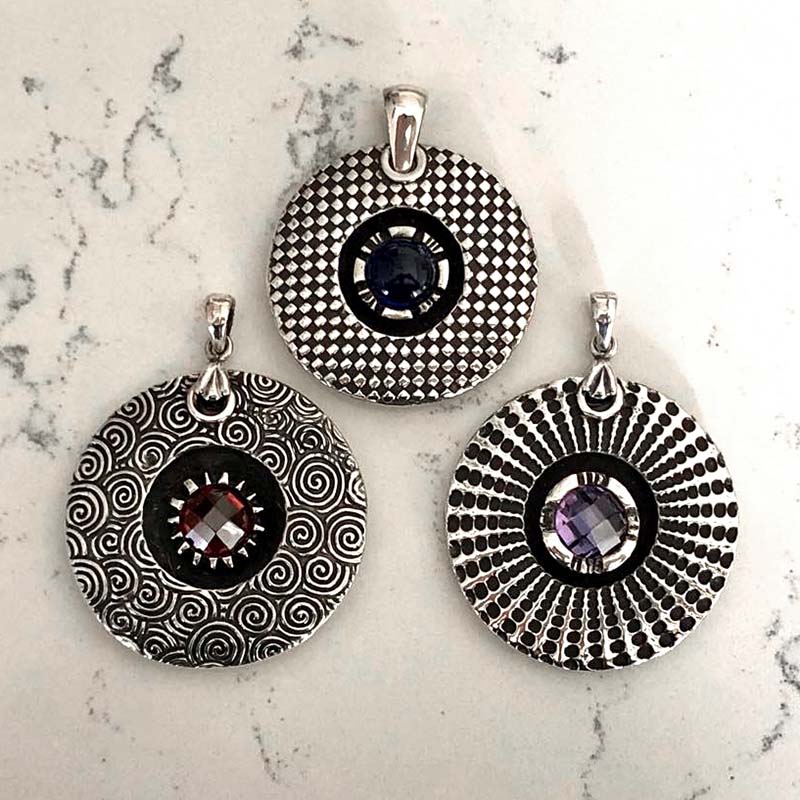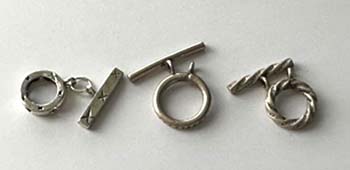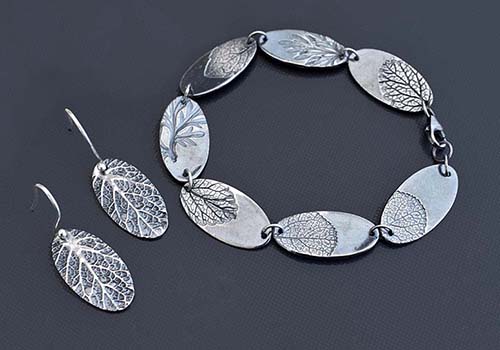Prefabricated Findings For Metal Clay
In the jewelry world, the word “findings” usually refers to design components that can be purchased separately and creatively combined to produce a piece of jewelry.
This category of items includes clasps, bails/bales, earring elements, French hooks, stone settings, beads, bead caps, charms, chains, decorative links, wire-formed features, and so forth. Findings might also include “found” objects such as shells, shark’s teeth, buttons, stones, crystal points, arrowheads, sea glass, and more.
In a nutshell, findings are the individual elements that are contained in jewelry designs.
This series of AMCAW Learning Center Resource articles covers three different categories of findings:
- Prefabricated findings that can be incorporated into metal clay jewelry before or after firing (the subject of this article).
- Fired findings formed from metal clay that can be incorporated directly into multi-faceted jewelry designs.
- Greenware findings formed from and for metal clay. These are elements that can be stored in the greenware stage to later be included in wet clay or greenware stage metal clay designs.
In addition to public videos and articles such as these in the AMCAW Learning Center, a study of the AMCAW Member Tutorials allows members to filter through an ever-expanding gallery of resources related to metal clay techniques and projects, including detailed guidelines for creating many metal clay findings. This series of articles provides a directed path to many of those resources.
Embeddable eyelets and ear posts
Star Earrings By Paola Mattioli
Instructor Showcase Collection
(AMCAW Tutorial)
PREFABRICATED FINDINGS FOR METAL CLAY
Prefabricated materials are those produced at a factory and later used in assembling and uniting standardized parts. Prefabricated findings for metal clay can be broken down into two primary categories: those that are designed to be fired in metal clay (generally known as embeddables) and traditional jewelry findings that are added during assembly of the finished piece, such as bails/bales, clasps, jump rings, connectors, and beads.
Embeddable eyelets
Double Pendant by Paola Mattioli
20G Collection (AMCAW Tutorial)
EMBEDDABLES are factory-formed milled or cast elements sold by many metal clay suppliers. They are designed specifically for use in metal clay and are generally available in fine silver, high-silver alloys, copper, and bronze. Embeddables include eyelets, bails/bales, prong settings for faceted stones, bezel cups for cabochons, brooch/pin findings, and more. Find out more about Embedding Metal in Metal Clay.
Fine silver prefabricated findings may be co-fired with fine silver and enhanced sterling metal clays that are fired in a kiln on an open shelf. For base metals that are fired in a reduction environment (in carbon), care should be taken to ensure that the firing temperature of the base metal doesn’t exceed the melting point of the finding. Copper fired at 970˚C/1718˚F requires an embeddable finding able to withstand this temperature. Some metals will alloy when fired in contact with another so always choose findings suitable for the base metal clay you are using, copper with copper, bronze with bronze etc. 925 sterling clays can be fired with sterling or fine silver findings but always check that the firing temperature is compatible.
Note that traditional 925 sterling silver elements are not recommended for use as embeddables for fine silver or enhanced sterling metal clays that are open shelf fired at optimal sintering temperatures. Metal clay’s high firing temperatures combined with long firing times degrade the strength of sterling silver, actually melting it from the inside out. Although the sterling silver may appear fine, it has become internally weak and brittle and can fail when placed under duress.
Embeddables formed from high-silver alloys (960 or higher) are more reliable at lower firing temperatures (below 1300°F/705°C) but are still prone to brittleness at higher temperatures and are not as reliable as fine silver embeddable findings. For more information on this, see the information in Embedding Metal in Metal Clay.
Embedded ear post
Star Earrings By Paola Mattioli
Instructor Showcase Collection
(AMCAW Tutorial)
Embeddable eyelets
What If You Fly? By Annemarie Klappe
20G Collection (AMCAW Tutorial)
Titanium findings may be co-fired with silver, sterling, copper, and bronze metal clays, but must not be fired above 1500°F/815°C. It may be necessary to extend the firing times to achieve optimal sintering at that firing temperature.
Most embeddable elements have two features:
- A functional feature that remains in view after firing and provides the intended function of the piece (prong setting, bezel capture, bail, connecting loop, etc.; and
- A capture feature that allows the functional element to connect securely to the metal clay. This capture feature is usually hidden below the surface of the metal clay (embedded). It is designed to create a mechanical connection between the metal clay and the functional feature by virtue of a series of ridges, grooves, or small prongs that are captured below the surface of the clay during the sintering process, or by small holes that create a metal clay ‘hot rivet’.
Embeddable findings may be placed in wet clay or set in the greenware stage and are secured with thick metal clay paste or lump clay. The capture feature is carefully hidden and well-embedded in the clay, carefully positioned below the surface, above the bottom, and away from the edge keeping in mind that the clay will shrink around the captured element. The capture feature should not be noticeable after firing.
Embeddable Bails and Eyelets
When placing embeddable bails or eyelets in a metal clay design, the user must remain aware that the metal clay will shrink but the embeddable will not.
For instance, if an embeddable bail or eyelet with a ridged capture element is placed precisely on the edge of a greenware element, as the clay shrinks during firing it will also shrink away from the embedded element, exposing the top portion of the post just below the loop. This greatly weakens the appearance, durability, and functionality of the finding.
To prevent this from happening, it is wise to place the embedded post slightly deeper into the edge of the piece before firing so that the edge actually covers a small portion of the bottom of the exposed bail or eyelet Don’t Bail Out on Bails. In this way, as the clay shrinks it actually can carry the embedded element with it and the placement will be perfect.
As shown here in the AMCAW Members Tutorial – Bird Box Pendant by Lisa Johnson
Embeddable Prong Settings and Bezel Cups
Embeddable prong settings and bezel cups are available for a wide variety of faceted stone shapes and sizes. These are embedded during either the wet clay or greenware stages. Stones are added after firing the piece. This post-fire setting option gives the designer the ability to include stones that cannot be fired in metal clay pieces.
For prong settings, as with embeddable bails and eyelets, it is very important to fully embed the prong setting’s capture feature in metal clay. The prong setting’s functional elements (the stone-setting portion of the finding) may rise above the surface of the piece, but protocols for optimal design call for the capture feature to be invisible in the metal clay finished piece. Depending on the design of the finding, the capture feature (which may be a stem on the side of the prong setting or a series of small prongs at the base) may be placed just below the finding or secured at its edge. It is vital to remember that the metal clay surrounding the capture shrinks but the metal finding does not, so an ample amount of clay is often called for to create a comfortable and discreet capture. This is especially important for rings, as the capture element is generally at the base of the embeddable setting for a faceted stone. An exposed prong capture can be especially uncomfortable.
Loretta Hackman, photo: Artist’s own
Julia Rai, photo: Paul Mounsey
Embeddable bezel cups generally arrive from the manufacturer with smooth sides and bottoms. They can usually be captured either in the wet clay stage or the greenware stage using either a friction treatment or a hot rivet treatment.
For friction capture, rough up the bottom and lower side edges of the bezel cup with coarse grit sandpaper. Coat the bottom and lower side edges with a coating of metal clay paste. Embed the cup slightly below the surface of the metal clay piece. The cup is captured during firing.
A hot rivet treatment provides a mechanical clay-to-bezel cup capture and may be more reliable than a friction capture. To create a hot rivet, first drill a small hole in the bottom of the bezel cup (at least 1mm in diameter). Place a dot of wet clay on the surface of your metal clay piece, just below the bezel cup. Press the cup into the wet dot and observe the wet clay ooze up through the hole in the bottom of the cup. Smooth the clay gently across the inside bottom of the cup, being careful not to clean the clay away. During firing, the dot of clay creates a rivet-like attachment, connecting the bottom of the piece to the inside of the bezel cup.
Embeddable Pin Backs
The pin backs shown here depict a couple of types of brooch setting. Others are available from metal clay suppliers.
The silver pin back finding shown above has two fine silver embeddable components that are fired in the clay and a steel pin stem that is set in place after firing. The embeddable components have small holes at their base and are designed to be treated as hot rivets.
The pin finding shown above has two threaded discs that are embedded into the clay.
The brooch components screw into the discs after firing.
TRADITIONAL JEWELRY FINDINGS
Findings such as bails/bales, toggle clasps, end caps, beads, jump rings, and bead caps are readily available from jewelry supply stores. Some designs, especially pendants, necklaces, or bracelets that may call for a smaller bail or clasp, can benefit from the strength of a factory-fabricated element rather than one formed from metal clay. Findings are readily available in sterling silver, copper, bronze, steel, and other metals.
Bails/bales and clasps can be purchased in a wide variety of sizes, styles, and designs. Keeping a stock of prefabricated elements that complements your personal style and brand can be a great time-saver, money-saver, and confidence-booster. It helps to know that these small bails/bales and clasps are strong enough to carry your beautiful jewelry designs well into future generations.
Bails/Bales
This is a small sampling of typical commercial bail designs.
The fine silver decorative barrel bead pendant with its syringe-formed swirls and accent dots is well-complemented by the purchased sterling silver bail from the artist’s inventory.
The bead and bail are connected by a long sterling silver headpin with a wire-wrapped loop.
The sleek enameled pendant is accented by a similarly sleek sterling silver bail whose shape and style provides a perfect complement to the piece as seen in the AMCAW tutorial Introduction to Enameling on Metal Clay by Pam East.
The pendant and bail are connected by a sterling silver jump ring.
The three fine silver lentil pendants are each accented by sterling silver pinch bails that capture the front and back holes at the top of each pendant as seen in the AMCAW tutorial Look-At-Me-Lentil by Loretta Hackman.
Note that the center bail is bold and sleek, complementing the bold geometric pattern in the pendant. The more delicate pinch bails on the first and last pendants offer a slightly more feminine flair.
Clasps and Other Findings
Delicate-looking (but functionally strong) prefabricated sterling silver toggle clasps, lobster clasps, jump rings, and earring findings are often incorporated into silver metal clay designs that are anticipated to experience significant wear-and-tear. They usually disappear into the piece, acting as minor stage performers, yet allowing the beautiful metal clay design elements to steal the show. (NOTE: using metal clay to create elements such as these is not usually recommended. As a sintered metal, metal clay doesn’t always meet the necessary workhorse performance standards.)
The primary focus of the earrings and bracelet shown in AMCAW Tutorial Parsley, Sage, Rosemary, and Thyme by Fiona Ingram rests on the beautifully textured ovals, but the ovals would have no function without the strong sterling silver findings that pull the piece together.
